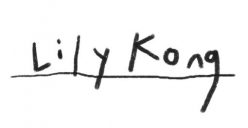This week I worked on 3 different triangulation projects:
1/ Iterations in drawings focusing on angle and position – 52 pages book
2/ Research from an archive (The Art of Humorous Illustration – Nick Meglin) and expand the scope of research
3/ New drawings on collected foul language from conversations
This week, I continued drawings on the three sentences. The drawing has changed from various viewpoints, from viewers looking at an object to involving a protagonist in a scene. I definitely felt that it is easier to iterate if the text sounds like a dialogue aka anything that starts with a “You”. “Do you…”, “What do you…”, “I wish you…”
(side talk) Also, the more I work on it, the more boring it becomes. This seems pretty natural – since I have to move on from my most comfortable ideas, the thinking process is not as easy as it was before. I had to look through all my visual references to keep me excited. I don’t think it is a particular bad thing to do – I know for a fact that I cannot come up with good ideas staring hard at blank paper. SO yes references.
I started my research by linking keywords. Starting from “Humour” to Cartoon – satire – caricature – meme culture – twitter – social media – media – knowledge transfer – form of illustration – content transfer – text based to image based – elimination of information
I also started reading about how media changes our culture, history, knowledge of the world etc. Amusing Ourselves to Death – Public Discourse in the Age of Show Business by Neil Postman was super informative about how every new media reshapes the generation, storage, transfer of knowledge.
There had been debates/conversations about how particular kinds of art/ illustration are more likely to become popular in social media. (Here social media generally refers to image-based social media aka Instagram and Facebook) The content is naturally shaped to fit instagram. The media has gradually becomes a concept deeply rooted among us. The metaphor in media could possibly be that the importance of visual is taking over text based information. More and more people receives information from visual-heavy social media instead of traditional informative text-based media like books and newspaper. The new media has become a concept, in which we think and make with it in mind.
I am also reading about humour in art, particularly since the twentieth century, when caricature started to rise in newspaper to memes in social media nowadays. I started to understand humour (in art) as a historical cultural product and as a subject to changes in style as music or literature. Just as modes of humour differ from one language, tones of humour and comic meaning change over different applications/media too.
I am working to narrow down and find an interesting focal point that not only relates to but also supports my studio practice.
DOWNLOAD The many ways in being rude book
84 pages just the way I like it:-)
